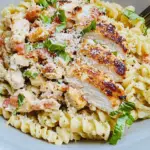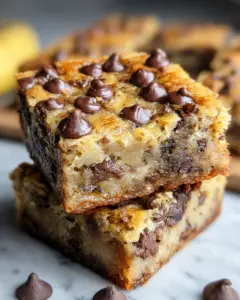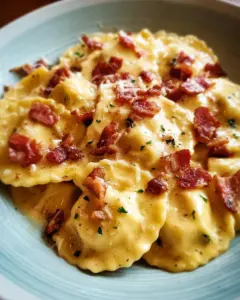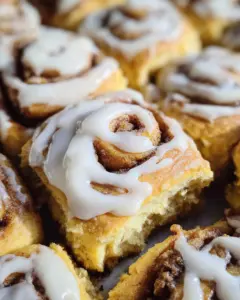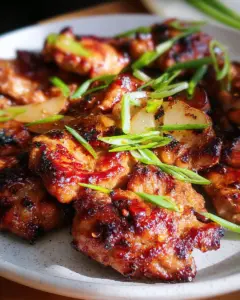Few dishes deliver the same level of comfort and satisfaction as a well-made creamy chicken ricotta pasta. This recipe combines tender, golden-seared chicken with al dente whole wheat pasta, all coated in a velvety sauce made from ricotta, Parmesan, and a touch of garlic. The addition of fresh spinach or kale adds a pop of color and nutrients, while Italian seasoning and optional red pepper flakes provide depth and a subtle kick. What makes this dish truly special is its versatility—it’s hearty enough for a family dinner yet elegant enough for entertaining, all while coming together in just 30 minutes.

Preparation Phase & Essential Tools
Before starting, gather the right tools to ensure a seamless cooking process. A large skillet or sauté pan is crucial for browning the chicken evenly and simmering the sauce. A heavy-bottomed pot works best for boiling pasta, as it distributes heat evenly and prevents sticking. You’ll also need a colander for draining the pasta, a cutting board and sharp knife for prepping ingredients, and measuring cups/spoons for accuracy. A wooden spoon or silicone spatula helps stir the sauce without scratching the pan, while a mixing bowl can hold prepped ingredients.
Why These Tools Matter
- A large skillet ensures enough surface area to cook the chicken in a single layer, preventing steaming and promoting caramelization.
- Reserving pasta water is a chef’s secret—the starchy liquid helps bind the sauce and adjust its consistency later.
- A sharp knife ensures uniform chicken pieces, which cook evenly and retain moisture.
Preparation Tips for Success
- Room-temperature ingredients: Cold ricotta can make the sauce grainy. Let it sit out for 15–20 minutes before using.
- Salt the pasta water generously: It should taste like seawater—this is your only chance to season the noodles themselves.
- Pat the chicken dry: Excess moisture prevents proper browning. Use paper towels to dry the cubes before seasoning.
- Undercook the pasta slightly: It will finish cooking in the sauce, absorbing flavors without turning mushy.
Ingredients List
For the Pasta
- 12 oz whole wheat penne or tortiglioni (or any short pasta)
- ½ cup reserved pasta water (or low-sodium chicken broth)
For the Chicken
- 1 lb boneless, skinless chicken breasts, cut into 1-inch cubes
- 2 tbsp olive oil
- Salt and freshly ground black pepper, to taste
For the Sauce
- 3 cloves garlic, minced
- 1 cup whole-milk ricotta cheese
- ½ cup freshly grated Parmesan cheese
- ½ cup heavy cream (optional, for extra richness)
- 1 tsp Italian seasoning
- ¼ tsp red pepper flakes (optional)
Add-Ins & Garnish
- 2 cups fresh spinach or kale, roughly chopped
- Fresh basil or parsley, for garnish
Step-by-Step Instructions
Cook the Pasta
- Bring a large pot of salted water to a boil. Add the pasta and cook until al dente (usually 1–2 minutes less than the package instructions).
- Reserve ½ cup of the starchy pasta water, then drain the pasta and set aside.
Prepare the Chicken
- Heat olive oil in a large skillet over medium-high heat.
- Season the chicken cubes with salt and pepper, then add them to the skillet in a single layer.
- Cook for 6–8 minutes, stirring occasionally, until golden brown and cooked through. Transfer to a plate and set aside.
Make the Sauce
- In the same skillet, reduce the heat to medium and add the minced garlic. Sauté for about 30 seconds until fragrant.
- Lower the heat and add the ricotta, Parmesan, reserved pasta water (or broth), and heavy cream (if using). Stir until smooth.
- Season with Italian seasoning, red pepper flakes, and additional salt/pepper to taste.
Combine Everything
- Return the cooked chicken to the skillet and stir to coat with the sauce.
- Add the drained pasta and toss gently. If the sauce is too thick, add a splash of reserved pasta water.
- Fold in the spinach or kale and cook for 1–2 minutes until just wilted.
Serve
Divide into bowls and garnish with fresh herbs. For extra richness, drizzle with olive oil or sprinkle with additional Parmesan.
A perfectly cooked creamy chicken ricotta pasta deserves to be served in a way that enhances its rich flavors and comforting texture. Whether you’re plating it for a casual weeknight dinner or a more formal gathering, thoughtful presentation and complementary side dishes can elevate the meal. Additionally, being aware of common pitfalls will help you achieve the best possible version of this dish every time.
Serving Suggestions for Maximum Appeal
Presentation matters, especially with a dish as visually appealing as this one. Here’s how to serve it like a pro:
- Garnish generously: A sprinkle of freshly chopped basil or parsley adds a pop of color and freshness. For extra richness, finish with a drizzle of high-quality olive oil or a few shavings of Parmesan cheese.
- Use warm bowls: Cold plates can cause the pasta to cool too quickly. Warm your serving bowls briefly by filling them with hot water, then drying them just before plating.
- Portion thoughtfully: If serving as a main course, aim for about 1.5 cups per person. For a smaller appetizer portion, ¾ cup is sufficient.
For a restaurant-worthy touch, twirl the pasta with tongs to create height on the plate, then arrange the chicken pieces around it. Scatter a few extra spinach leaves or herbs on top for contrast.
Common Mistakes and How to Avoid Them
Even experienced cooks can run into issues when preparing this dish. Here are the most frequent missteps and how to fix them:
- Overcooking the pasta: Mushy pasta ruins the texture. Always cook it al dente (firm to the bite) since it will continue to soften in the sauce. Test a piece 1–2 minutes before the package’s suggested time.
- Skipping pasta water: The starchy reserved water is essential for adjusting the sauce’s consistency. Without it, the dish can become too thick or clumpy.
- Overcrowding the pan: If the chicken is packed too tightly in the skillet, it will steam instead of sear. Cook in batches if necessary to ensure even browning.
- Using cold ricotta: Straight-from-the-fridge ricotta can make the sauce grainy. Let it sit at room temperature for 15–20 minutes before incorporating it into the dish.
- Underseasoning: Ricotta and Parmesan are mild cheeses, so the dish relies on proper seasoning. Taste and adjust the salt, pepper, and red pepper flakes at the end.
Perfect Side Dishes to Complement the Meal
While this pasta is satisfying on its own, pairing it with the right sides can turn it into a well-rounded feast. Here are eight excellent options:
- Garlic bread: A classic choice for soaking up the creamy sauce. Opt for a crusty baguette brushed with garlic butter and toasted until golden.
- Caesar salad: The crisp romaine and tangy dressing cut through the richness of the pasta. Add homemade croutons for crunch.
- Roasted asparagus: Toss asparagus spears with olive oil, salt, and lemon zest, then roast at 400°F (200°C) for 12–15 minutes.
- Caprese salad: Fresh tomatoes, mozzarella, and basil drizzled with balsamic glaze provide a light, refreshing contrast.
- Grilled zucchini: Thinly sliced zucchini grilled with a touch of olive oil and herbs adds a smoky, low-carb element.
- Tomato bruschetta: Toasted bread topped with diced tomatoes, garlic, and basil offers a bright, acidic counterpoint.
- Arugula salad: Peppery arugula tossed with lemon vinaigrette and shaved Parmesan keeps the meal feeling fresh.
- Sautéed mushrooms: Earthy mushrooms cooked with garlic and thyme deepen the dish’s savory notes.
Perfecting creamy chicken ricotta pasta goes beyond just following the recipe—understanding how to adapt, store, and reheat it ensures every bite tastes as good as the first. This section covers essential tips for customization, proper storage methods, and answers to common questions so you can enjoy this dish with confidence.
Recipe Tips and Customizations
While the classic version of this pasta is delicious on its own, a few tweaks can tailor it to different tastes and dietary needs:
- Protein variations: Swap chicken for shrimp, Italian sausage, or even grilled tofu for a vegetarian option. For seafood lovers, scallops or flaky white fish work beautifully.
- Vegetable additions: Incorporate sun-dried tomatoes, roasted red peppers, or artichoke hearts for extra depth. Mushrooms sautéed with garlic add an earthy richness.
- Cheese substitutions: If ricotta isn’t available, blend cottage cheese until smooth for a similar texture. For a sharper flavor, try pecorino Romano instead of Parmesan.
- Pasta alternatives: Gluten-free, chickpea, or lentil pasta can be used without sacrificing texture. Short shapes like fusilli or rigatoni hold the sauce well.
- Lighter version: Omit the heavy cream and use extra ricotta thinned with pasta water. Greek yogurt (added off-heat) can also provide tanginess and creaminess.
For a bolder flavor, stir in a tablespoon of lemon zest or a splash of white wine when sautéing the garlic. Fresh herbs like thyme or oregano can replace Italian seasoning for a more aromatic profile.
Storage and Reheating Instructions
This dish stores well, but proper handling keeps the texture and flavor intact:
- Refrigeration: Store leftovers in an airtight container for up to 3 days. To prevent drying, press a piece of parchment paper directly onto the pasta before sealing the lid.
- Freezing: Freezing is not recommended. The ricotta sauce may separate when thawed, resulting in a grainy texture. If necessary, freeze just the cooked chicken and pasta separately, then make a fresh sauce when reheating.
- Reheating:
- Stovetop: Warm the pasta in a skillet over low heat with a splash of chicken broth or milk, stirring frequently. Avoid high heat to prevent curdling.
- Microwave: Use 50% power in 30-second intervals, stirring between each, and add liquid as needed.
Note: The spinach will wilt further upon reheating, so add a handful of fresh greens to revive the dish’s brightness.
Frequently Asked Questions
Can I use low-fat ricotta?
Yes, but the sauce will be less creamy. Whole-milk ricotta provides the best texture and flavor.
Why is my sauce grainy?
This happens if the ricotta was too cold or overheated. Always let it sit at room temperature before use, and stir the sauce over low heat.
How can I make this dish ahead of time?
Prep components separately: Cook the pasta (toss with olive oil to prevent sticking), sear the chicken, and store them refrigerated. Combine with freshly made sauce when ready to serve.
What if I don’t have heavy cream?
The dish is still creamy without it! Use extra ricotta or a splash of whole milk, and rely on the starchy pasta water to bind the sauce.
Can I add wine to the sauce?
Absolutely. Deglaze the pan with ¼ cup dry white wine (like Sauvignon Blanc) after sautéing the garlic, letting it reduce before adding other ingredients.
How do I fix a too-thick sauce?
Gradually mix in reserved pasta water, broth, or milk until reaching the desired consistency.
Final Thoughts
Creamy chicken ricotta pasta is a versatile, crowd-pleasing dish that balances indulgence with simplicity. Its rich yet light sauce, customizable ingredients, and quick preparation make it ideal for both busy weeknights and special occasions. By mastering the techniques—from properly searing chicken to adjusting sauce consistency—you’ll create a restaurant-quality meal at home.
Experiment with variations to keep it exciting, and don’t forget the power of garnishes like fresh herbs or a crack of black pepper to elevate each plate. Whether served with a crisp salad or crusty bread, this pasta promises comfort in every bite.
Creamy Chicken Ricotta Pasta
Ingredients
- 12 oz whole wheat pasta penne or tortiglioni
- 1 lb boneless skinless chicken breast, cut into bite-sized pieces
- 2 tablespoons olive oil
- 3 cloves garlic minced
- 1 cup ricotta cheese
- ½ cup grated Parmesan cheese
- ½ cup chicken broth or reserved pasta water
- ½ cup heavy cream optional
- 1 teaspoon Italian seasoning
- ¼ teaspoon red pepper flakes optional
- Salt and black pepper to taste
- 2 cups fresh spinach or kale optional
- Fresh basil or parsley for garnish
Instructions
- Cook the Pasta
- Boil pasta in salted water until al dente.
- Reserve ½ cup of the pasta water, then drain and set aside.
- Prepare the Chicken
- Heat olive oil in a large skillet over medium heat.
- Season the chicken pieces with salt and black pepper.
- Sauté the chicken for 6–8 minutes, until golden brown and fully cooked. Remove from the skillet and set aside.
- Make the Sauce
- In the same skillet, add the minced garlic and sauté for about 1 minute.
- Stir in the ricotta, Parmesan, chicken broth, and heavy cream (if using).
- Add Italian seasoning, red pepper flakes, and additional salt and pepper to taste. Stir until smooth and heated through.
- Combine Ingredients
- Return the cooked chicken to the skillet.
- Add the cooked pasta and toss everything to coat in the sauce.
- Stir in the spinach or kale and cook just until wilted.
- If the sauce is too thick, thin it with a bit of reserved pasta water.
- Serve & Enjoy
- Garnish with fresh basil or parsley and serve hot.
- Notes
- Add cherry tomatoes or sun-dried tomatoes for extra flavor.
- Serve with garlic bread or a simple side salad for a complete meal.
- Store leftovers in an airtight container in the fridge for up to 3 days.
